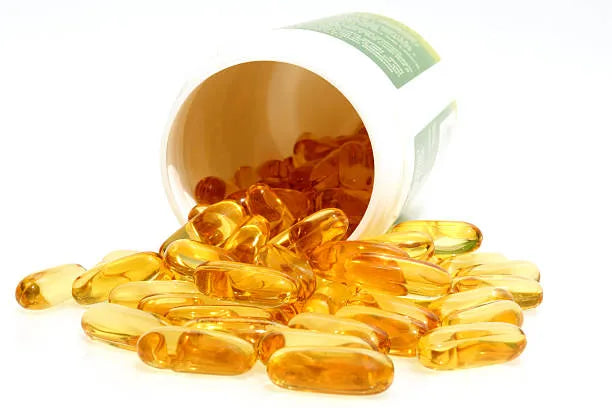
Neuro Nutrition
DHA for Brain Health
DHA, or docosahexaenoic acid, is an omega-3 fatty acid central to brain health. It is a major structural component of neuronal membranes, where it influences membrane fluidity, receptor function, and synaptic signaling. Evidence across biochemistry and neuroscience supports DHA’s role in membrane architecture and gene expression programs related to neural development and plasticity (Bazinet & Layé, 2014; Stillwell & Wassall, 2003).
The Role of DHA in Brain Evolution
The human brain is metabolically expensive and unusually large for our body size. One proposed contributor to this trajectory is reliable access to shoreline foods rich in DHA, iodine, and other brain-relevant nutrients during key phases of human evolution. Reviews from evolutionary nutrition groups outline how marine foods could have supported neural expansion and function (Cunnane & Crawford, 2014).
While body size generally scales with relatively smaller brains across mammals, Homo sapiens are an outlier. The hypothesis that coastal foraging increased DHA intake aligns with observed requirements for neural tissue composition, though it complements—not replaces—other forces like genetics, social structure, and tool use.
The Importance of DHA During Pregnancy
Most neurogenesis and brain structural assembly occur before birth and in early infancy. Maternal DHA status affects fetal and infant neural development, visual function, and later cognitive outcomes (Innis, 2007).
Large cohort work reported that children of mothers with very low seafood intake during pregnancy had a higher risk of suboptimal verbal, social, and fine motor outcomes at 8 years compared with children of mothers consuming more seafood within safe-mercury guidelines (Hibbeln et al., The Lancet, 2007). Consistent with this, current FDA/EPA advice encourages 2–3 servings (8–12 oz) per week of low-mercury fish during pregnancy for DHA and other nutrients (FDA/EPA Fish Advice).
DHA Supplementation and Forms
Seafood provides DHA in natural matrices that include phospholipids and triglycerides. Supplements typically deliver DHA as re-esterified triglycerides, ethyl esters, or phospholipids (e.g., krill oil); all raise circulating DHA, though bioavailability and tissue incorporation can vary by form and co-ingestion context. Comparative studies suggest phospholipid-bound DHA may show certain kinetic advantages, but triglyceride and ethyl ester forms remain effective sources when taken with meals (Schuchardt & Hahn, 2015; Ghasemifard et al., 2015).
Practically, frequent intake of low-mercury seafood and/or evidence-based DHA supplementation achieves meaningful status improvements. Choice of form can be guided by tolerance, diet pattern, and sustainability preferences, including algal-derived DHA for those avoiding fish.
DHA, Membranes, and Signal Precision
In neural and photoreceptor membranes, DHA-rich phospholipids confer exceptional flexibility and influence protein–lipid interactions that shape receptor dynamics and ion channel function (Stillwell & Wassall, 2003). Researchers including Michael Crawford have advanced hypotheses about DHA’s unique biophysical roles supporting high-fidelity signaling and transduction in excitable tissues. These ideas, while intriguing, sit alongside mainstream evidence that DHA’s established benefits arise from membrane biophysics, synaptic modulation, and pro-resolving lipid mediators rather than proven “photon-to-electron” conversion in the brain. Readers can explore Crawford’s perspective in interviews and talks for additional context (linked below), with the caveat that such quantum-framed mechanisms remain theoretical in the human brain.
The Future of DHA and Brain Health
Global demand for long-chain omega-3s (EPA/DHA) exceeds traditional wild-catch supplies. Analyses indicate a widening gap that aquaculture feeds and alternative sources must address (Sprague et al., 2016). Scalable, sustainable solutions include responsibly managed fisheries, next-gen aquaculture, and especially microalgal fermentation that produces DHA without marine harvest (Adarme-Vega et al., 2014).
Alongside supply, public health guidance should emphasize DHA literacy, particularly for pregnancy and early life, and a shift from quantity to nutrient density in food systems. This aligns with modern fish-advice frameworks that balance DHA benefits with contaminant risk management (FDA/EPA Fish Advice).
For more context and related topics, see our blog. To explore products and protocols we use to support brain, vision, and performance, visit our catalog here.
Sources & Further Reading
Cunnane SC, Crawford MA. Energetics and human brain evolution. Br J Nutr. 2014.
Innis SM. Dietary omega-3 fatty acids and brain development. J Pediatr. 2007.
Hibbeln JR et al. Maternal seafood consumption and child outcomes. Lancet. 2007.
Sprague M, Dick JR, Tocher DR. Impact of global fish oil supply on aquaculture’s DHA. PeerJ. 2016.
Adarme-Vega TC et al. Microalgae and long-chain omega-3: a sustainable source. Mar Drugs. 2014.
FDA/EPA. Advice About Eating Fish for Those Who Might Become or Are Pregnant, and Others.
DHA, with Michael Crawford — The Mother and Child Foundation (YouTube)
Quantum Properties of Omega-3 DHA — Dr Sara Pugh with Prof. Crawford (YouTube)
More from PureClean Performance: Ask Dr. Cohen Series

The link for the YouTube on “Quantum Properties…” says it “is no longer available”….
I see quite a few DHA supplements that claim they are phosphoglycerides. What are your thoughts on these? I generally eat salmon or mackerel at least once a week- is that enough?